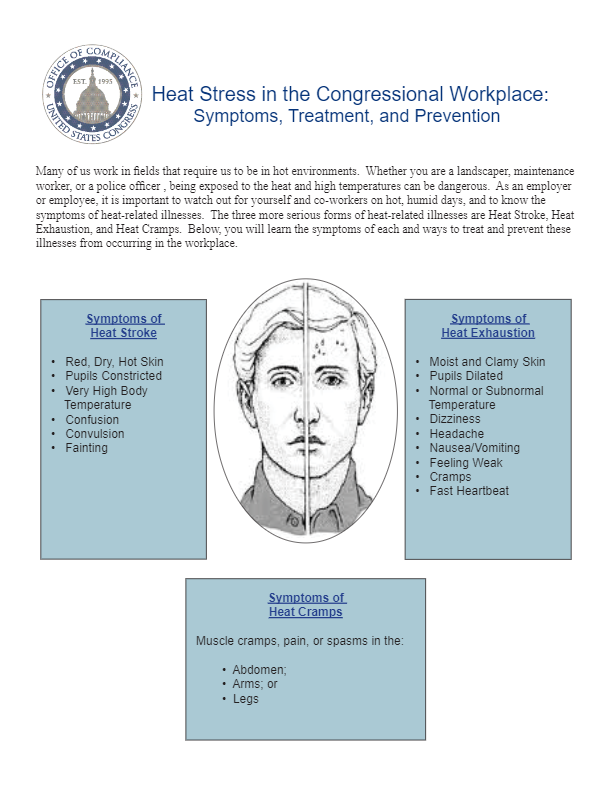Many of us work in fields that require us to be in hot environments. Whether you are a landscaper, maintenance worker, or a police officer, being exposed to the heat and high temperatures can be dangerous. As an employer or employee, it is important to watch out for yourself and co-workers on hot, humid days, and to know the symptoms of heat-related illnesses. The three more serious forms of heat-related illnesses are Heat Stroke, Heat Exhaustion, and Heat Cramps. Below, you will learn the symptoms of each and ways to treat and prevent these illnesses from occurring in the workplace.
Symptoms of Heat Stroke
- Red, Dry, Hot Skin
- Pupils Constricted
- Very High Body Temperature
- Confusion
- Convulsion
- Fainting
Symptoms of Heat Exhaustion
- Moist and Clamy Skin
- Pupils Dilated
- Normal or Subnormal Temperature
- Dizziness
- Headache
- Nausea/Vomiting
- Feeling Weak
- Cramps
- Fast Heartbeat
Symptoms of Heat Cramps Muscle cramps, pain, or spasms in the:
- Abdomen;
- Arms; or
- Legs
Treatment Options for Heat-Related Illnesses
There are some jobs that require people to work in the sun and heat. If you notice someone in the workplace exhibiting symptoms of a heat-related illness, here are a few things to do to help:
- Radio/call for help
- Administer first aid (in the most severe cases, call for an ambulance)
- Move the person to a shaded area or air-conditioned area if possible
- If the person is responsive and he/she is not vomiting, give him/her sips of water
- Loosen the person’s clothing
- Help cool the person by fanning or applying cool water to exposed skin
While working outdoors, you should have water easily accessible and shade yourself as much as possible. Review your agency’s emergency plan for heat-related illnesses and what to do if an emergency arises.
Ways to Prevent Heat-Related Illnesses
When temperatures are high, it is best to limit your time outdoors. Avoid heavy exertion, sun exposure, and high humidity. When it is necessary to be outdoors, be sure to gradually build up to heavy work and, whenever possible, schedule those activities during the coolest parts of the day. Additionally, if you must work in the heat, here are some steps you can take to prevent a heat-related illness in the workplace
